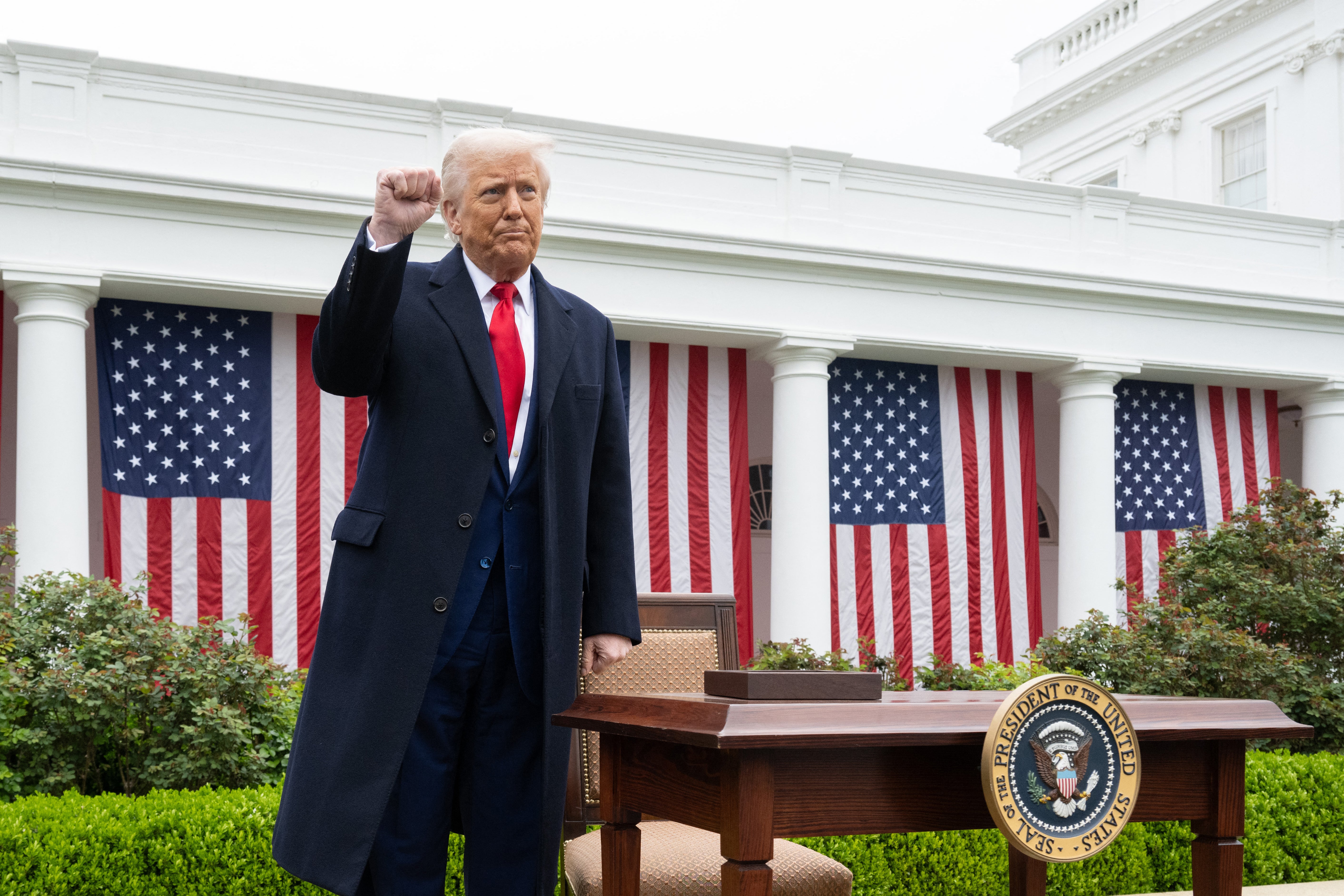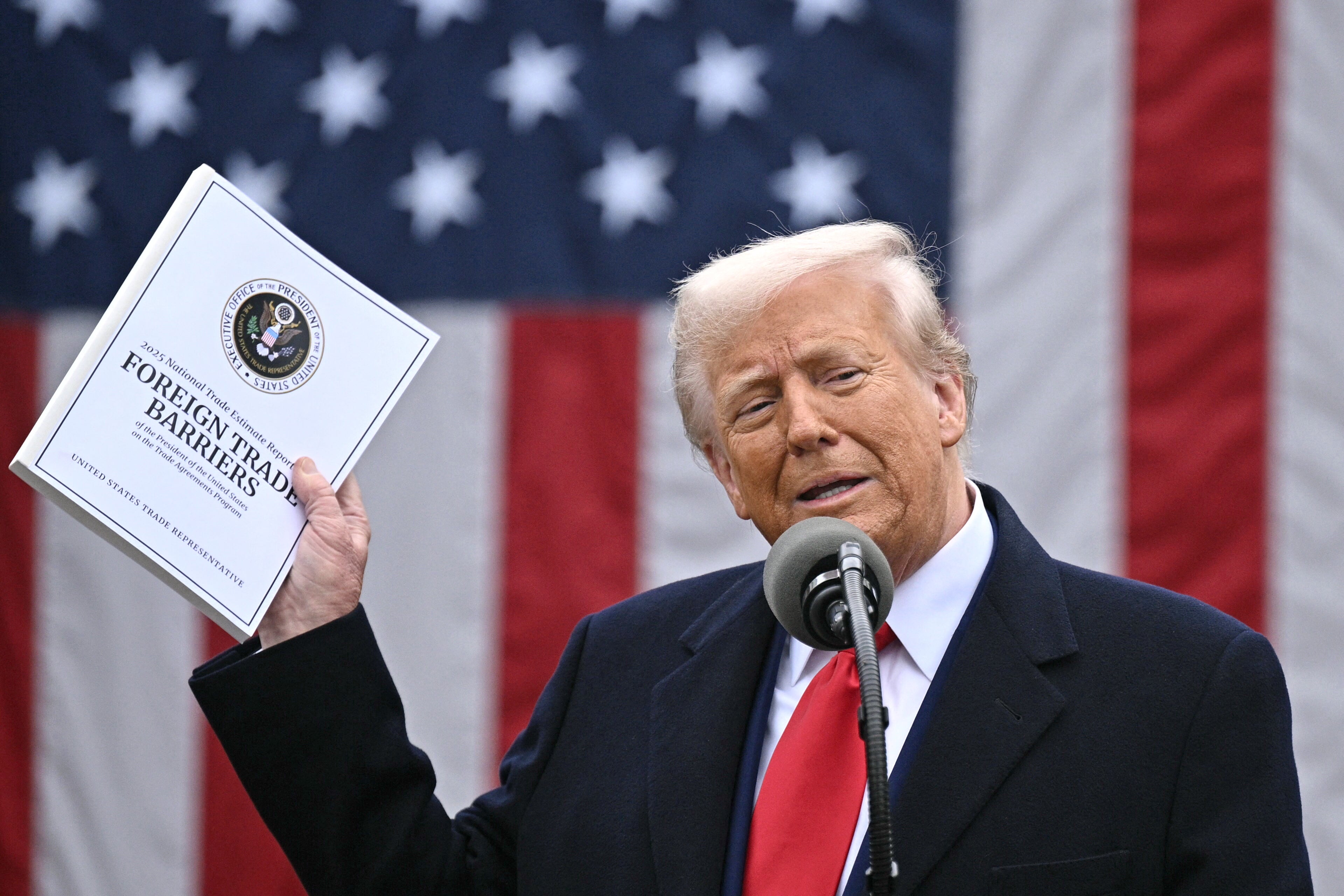After months of back-and-forth surrounding President Donald Trump’s tariffs, a U.S. trade court ruled Wednesday that he “exceeded his authority” in imposing sweeping levies on goods imported from around the world.
The three-judge panel of the U.S. Court of International Trade struck down steep tariffs Trump implemented against dozens of nations last month. It also nulled those imposed on Mexican, Canadian and Chinese imports, which the president has claimed would reduce fentanyl and drug trafficking from those countries.
Trump has argued that tariffs will help grow the economy, encourage consumers to buy more American goods, bring more jobs into the U.S. and stop other countries from taking advantage of America. He also argued his “Liberation Day” tariffs, which were implemented under an “emergency powers law,” were allowed because the country’s trade deficits amounts to a national emergency.
Critics, however, argue that they have, by and large, spun the global economy into chaos and stoked fears of inflation.
While the ruling scraps most of Trump’s tariffs, it allows levies on some imports that will affect all Americans to remain in effect. The White House immediately said it would fight the decision.
Here’s what to know about the ruling and the future of how it might impact the prices of everyday goods:

What was Liberation Day?
Trump unleashed a flurry of import tariffs on all trade with the country on April 2, which he dubbed “Liberation Day.”
All nations were struck by the sweeping measures, which saw the U.K. hit by a 10 percent tariff on all exports to the U.S. Meanwhile, Trump declared America “will no longer be ripped off.”
While Trump announced certain percentage levies against nearly all U.S. trading partners, he soon after reversed course, allowing for a 90-day window for every country except China to negotiate new terms. The new deadline was set to expire July 9.
What did the trade court rule?
The U.S. Court of International Trade ruled that Trump “exceeded his authority” with his hefty “Liberation Day” tariffs.
The court said that the International Emergency Economic Powers Act, a 1977 law Trump invoked to implement the tariffs, does not give him the authority to implement such levies. It also blocked a separate set of levies imposed on China, Mexico and Canada that Trump said would stop the flow of fentanyl and other drugs into the country.
The ruling, a result of two separate cases challenging Trump’s “Liberation Day” tariffs, is set to impact many, but not all, of the tariffs Trump has imposed during his second term.

What was Trump’s response?
The Trump administration vowed to go to the Supreme Court if necessary to appeal the ruling.
Trump’s deputy chief of staff Stephen Miller accused the court of a “judicial coup”, while White House spokesman Kush Desai slammed the decision, saying it was not for “unelected judges to decide how to properly address a national emergency.”
The Justice Department has also asked the court to put a pause on its ruling, arguing that it is “critical for the country’s national security and the president’s conduct of ongoing delicate diplomatic efforts.”
If the judges decline to pause their ruling, the Trump Administration will go to the federal appeals court, and then the Supreme Court.
What is now tariff-free?
The ruling blocks the tariffs Trump implemented on “Liberation Day” on nearly all U.S. trading partners, as well as levies he imposed earlier this year on China, Mexico and Canada.
The “liberation Day” tariffs impacted nearly every country globally, imposing a 10 percent tax on imports. Trump warned they would eventually rise to higher rates for some countries, but those reciprocal tariffs were later delayed until July 9.
The court also stopped 25 percent tariffs that Trump implemented against Canada and Mexico over illegal immigration and drug trafficking, and 20 percent on most Chinese goods over the country’s alleged role in producing fentanyl, The Washington Post reported.

What will still face tariffs?
Trump’s tariffs on specific products, like steel, aluminum and automobiles, are not affected by the ruling, The Washington Post reported. Unlike other tariffs, Trump did not use emergency powers to implement these levies, instead opting to use a 1962 trade law to put them into effect.
A 25 percent import tax on all steel and aluminum coming into the country, including products made from these metals, went into effect on March 12. The move delivered a major blow to America’s two North American neighbors, Canada and Mexico, which deliver most of the country’s steel imports.
Meanwhile, the Trump administration imposed 25 percent tariffs on imported automobiles in early April. A 25 percent tariff on cars could increase prices between $2,500 and $20,000 per vehicle, according to reports.
Some of those levies, however, were walked back to provide some relief to U.S. automakers after warnings from car manufacturers who threatened price increases.
With reporting from the Associated Press.







